Nucleic Acids
The molecules that define us!
Nucleic acids are huge organic molecules that contain atoms such as carbon, hydrogen, oxygen, nitrogen and phosphorus. Nucleic acids are made up of monomers known as nucleotides.
Before we dive into the structure, bonding and components let us just cover the basics.
There are two main types of Nucleic acids:
- DNA standing for Deoxyribose Nucleic Acid.
- RNA standing for Ribose Nucleic Acid.
DNA - Deoxyribose Nucleic Acid
DNA is what holds all our genetic information, it is found in the nucleus in eukaryotic cells and in the cytoplasm of prokaryotic cells.
As mentioned before, all nucleic acids are made up of monomers known as nucleotides.
What is a nucleotide?
A nucleotide is made up of 3 main components which are:
- Nitrogenous base - which contains carbon, hydrogen and oxygen. There are 4 nitrogenous bases in the DNA: Adenine (A), Guanine (G), Thymine (T) and Cytosine (C). These bases can be further categorized into two groups in terms of structure, Adenine and Guanine contain 2 rings and are known as purines while Cytosine and Thymine contain 1 ring and are known as pyrimidines.
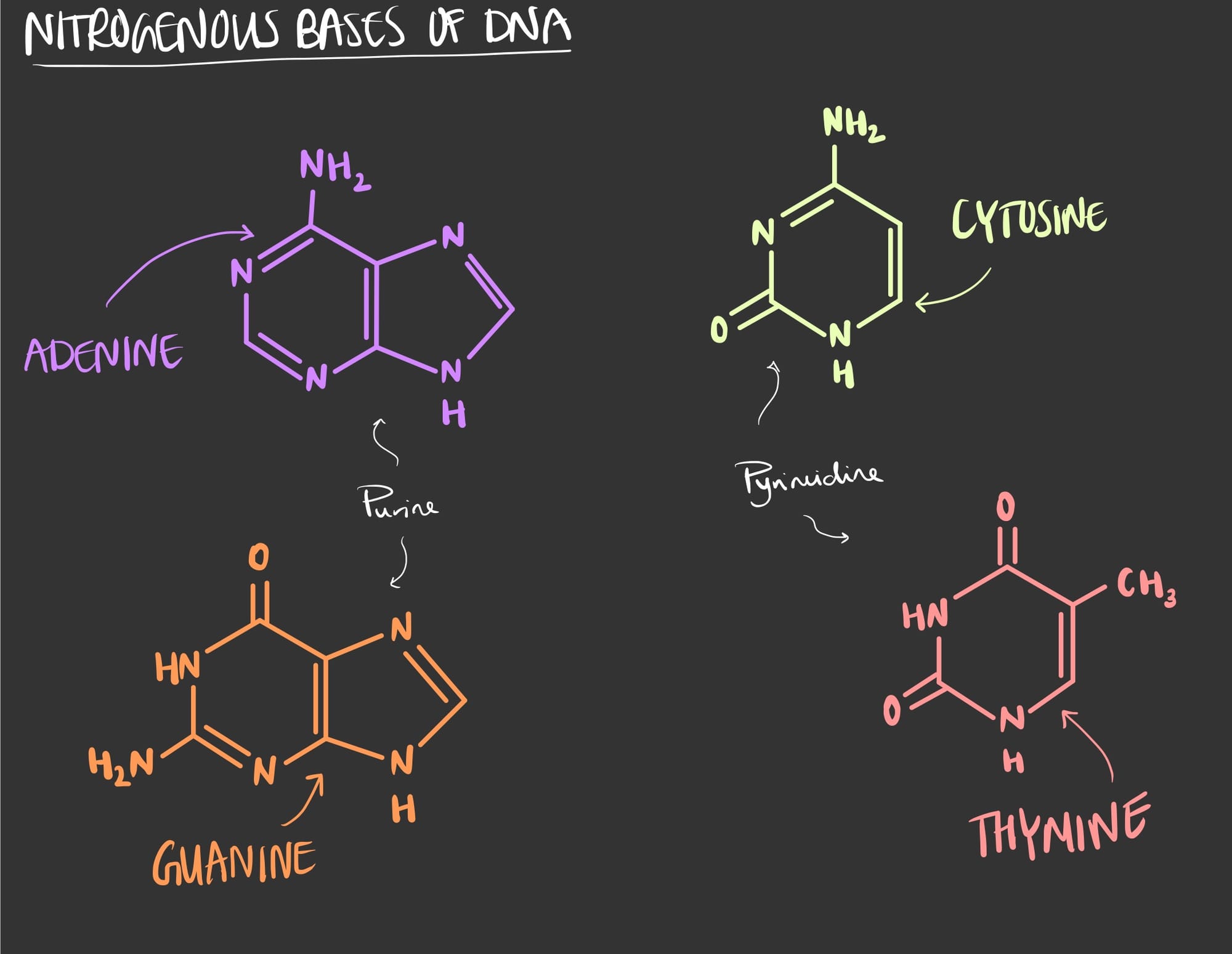
- 5’ carbon sugar - in the DNA specifically called DEOXYribose which means it has a hydroxyl group (-OH) on the 3’ carbon and but only a hydrogen (-H) on the 2' carbon.
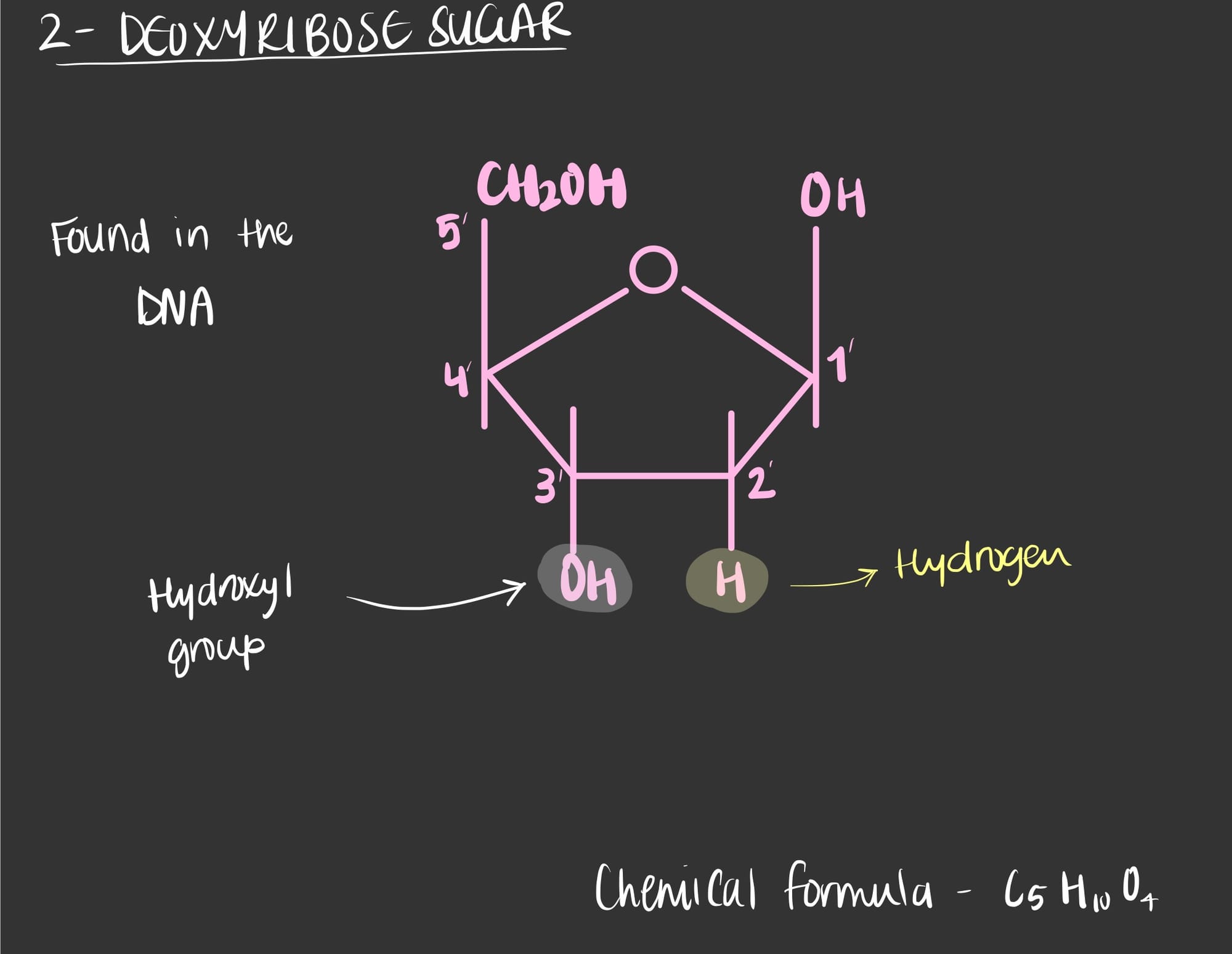
- Phosphate group (PO4-3) - which gives the DNA a slightly negative charge.
To further understand let us look at the structure of a nucleotide.
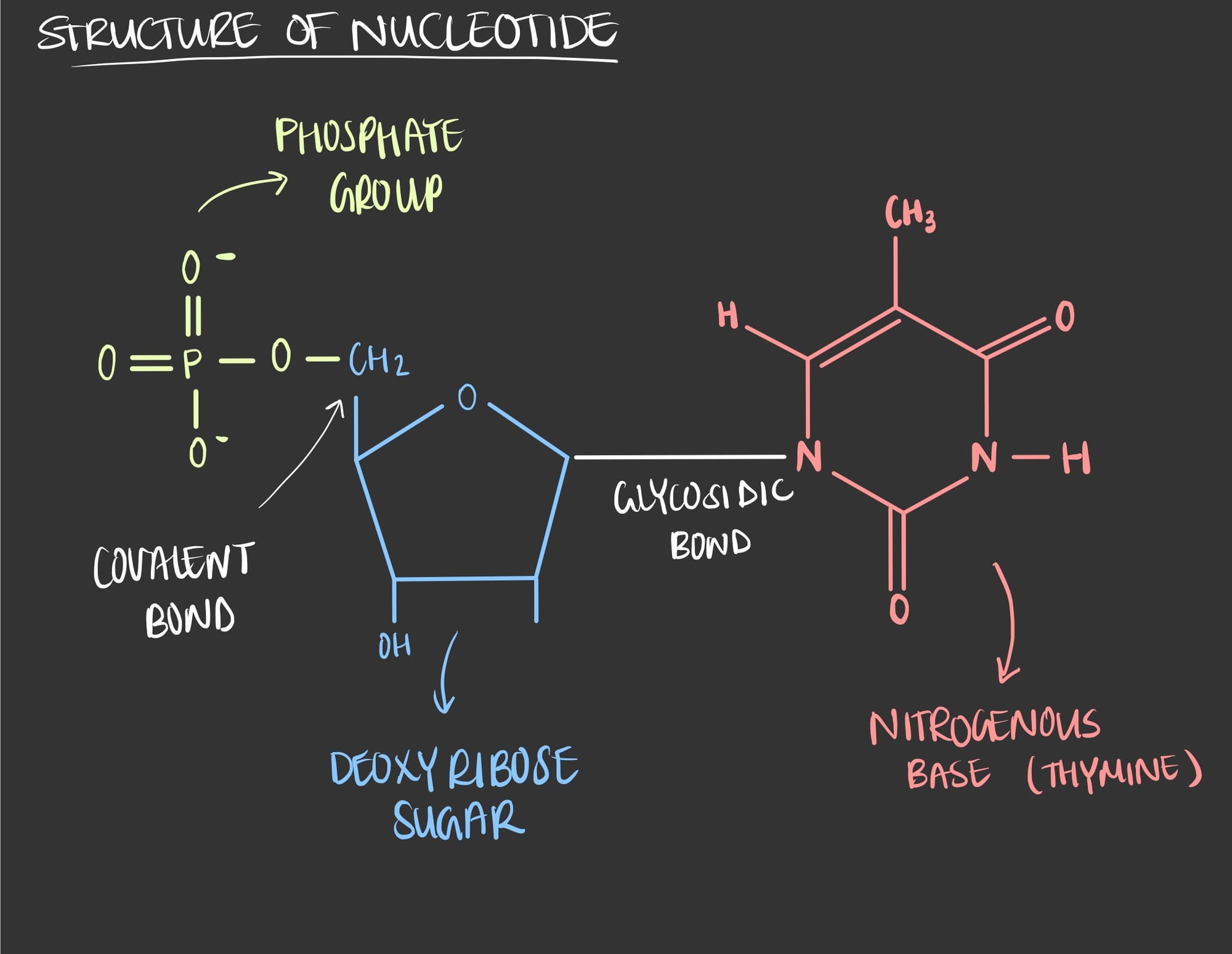
The DNA is attached in a particular order which gives its unique characteristic structure which is double stranded, helical and anti-parallel. Well to understand that we need to dive into a bit of chemistry and draw some structures.
As mentioned before, the DNA strands consists of many bonded nucleotides. The nitrogenous bases (A, T, C, G) have a very specific bonding.
Interestingly when scientists were studying the DNA, they saw that Adenine is always paired with Thymine and that Guanine is always paired with Cytosine.
In other words a purine is always bonded to a pyrimidine, they complement one another. Which led to the establishment of Charagff's rule.
So, the DNA will always be bonded in this matter:
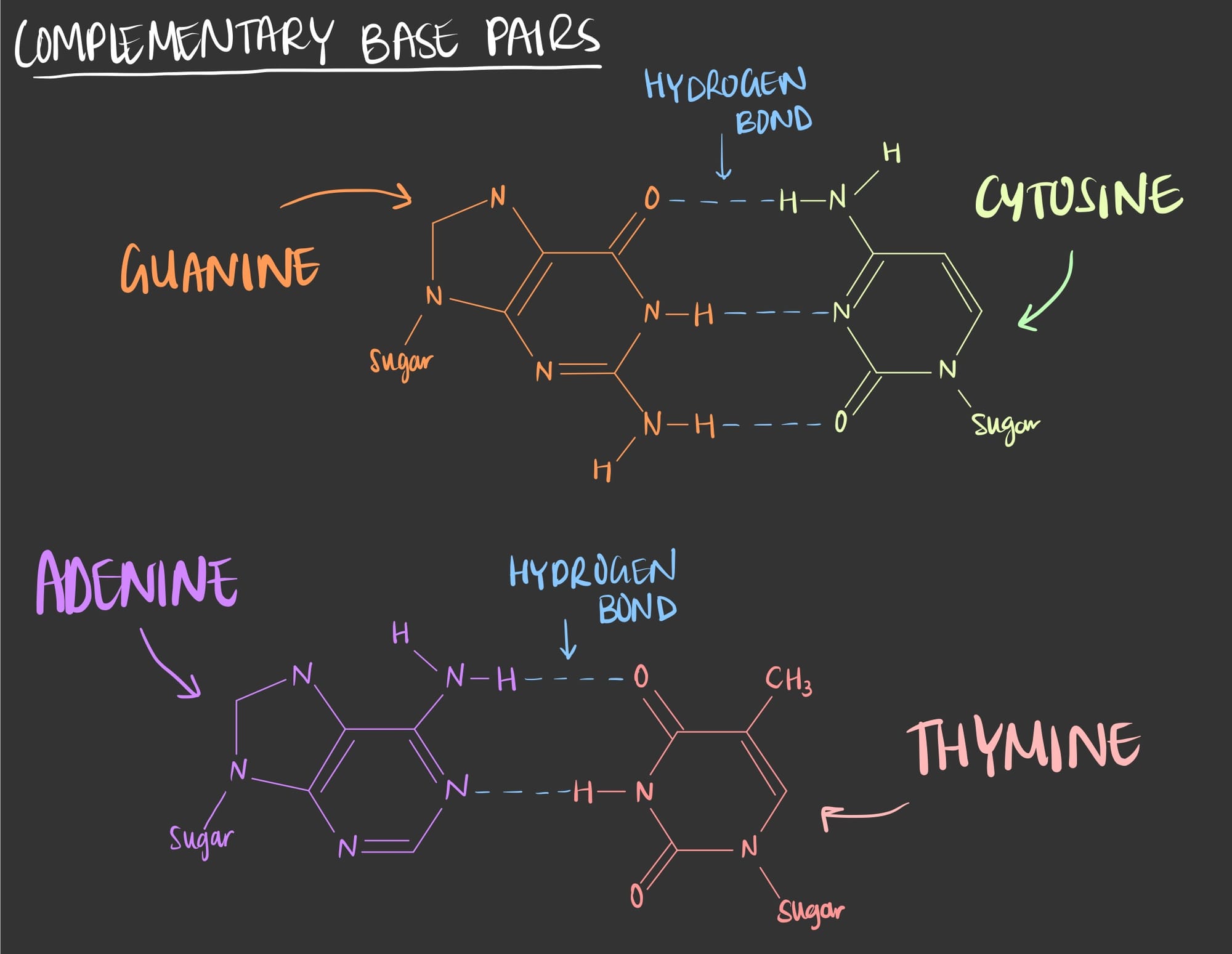
RNA - Ribose Nucleic Acid
RNA is the messenger that translates the information that the DNA holds. It can be found in the nucleus and in the cytoplasm. RNA is pivotal for protein synthesis and acts as an intermediate between DNA and protein synthesis.
Similar to DNA, RNA is made up of monomers known as nucleotides.
The difference lies in one of the nitrogenous bases and the type of sugar.
A nucleotide is made up of:
- Nitrogenous base: Containing carbon, hydrogen, and oxygen, RNA has four nitrogenous bases: Adenine (A), Guanine (G), Cytosine (C), and Uracil (U). Uracil replaces Thymine, which is found in DNA.
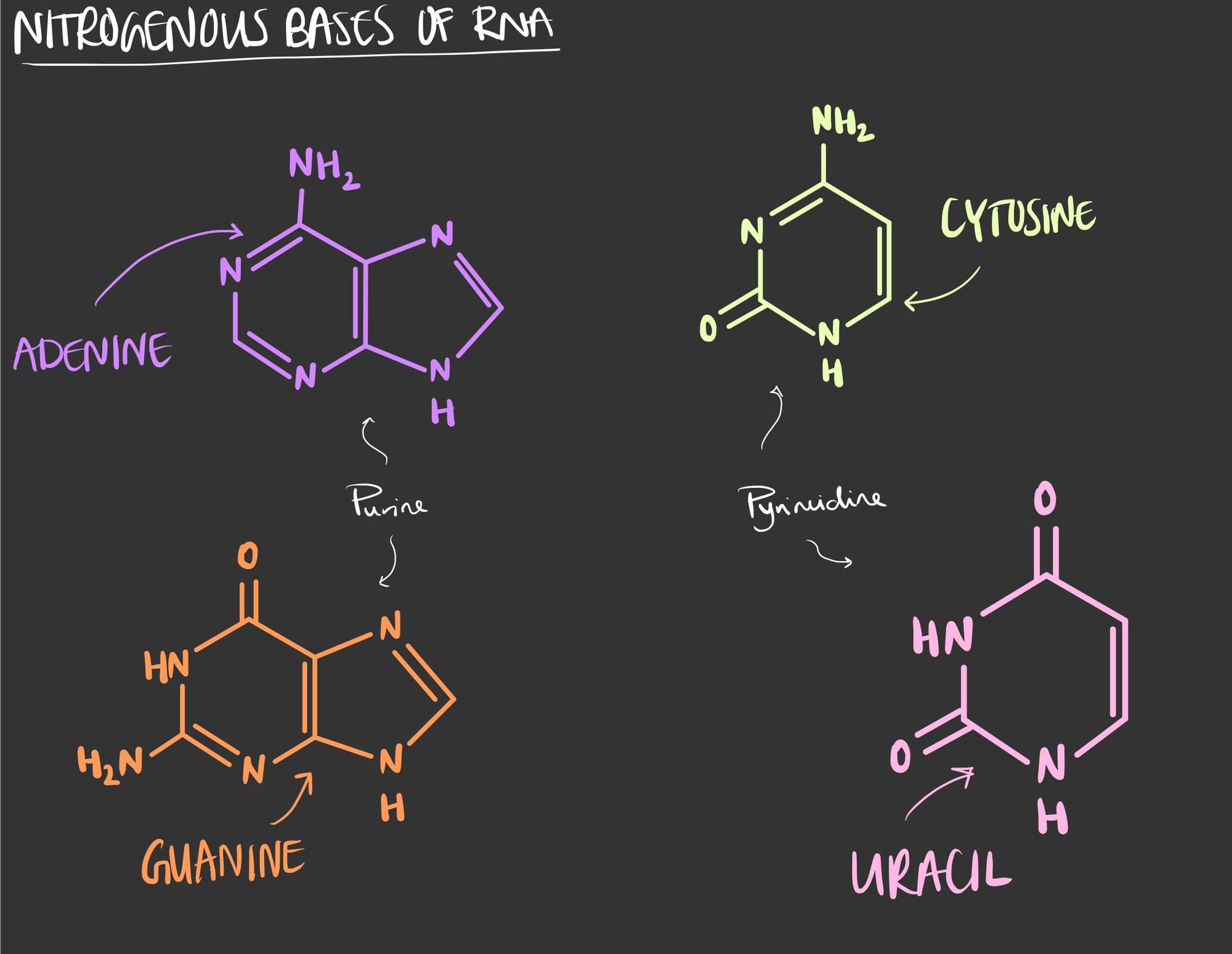
- 5’ carbon sugar: In RNA, the sugar is ribose, which has a hydroxyl group (-OH) on both the 2’ and 3’ carbons.
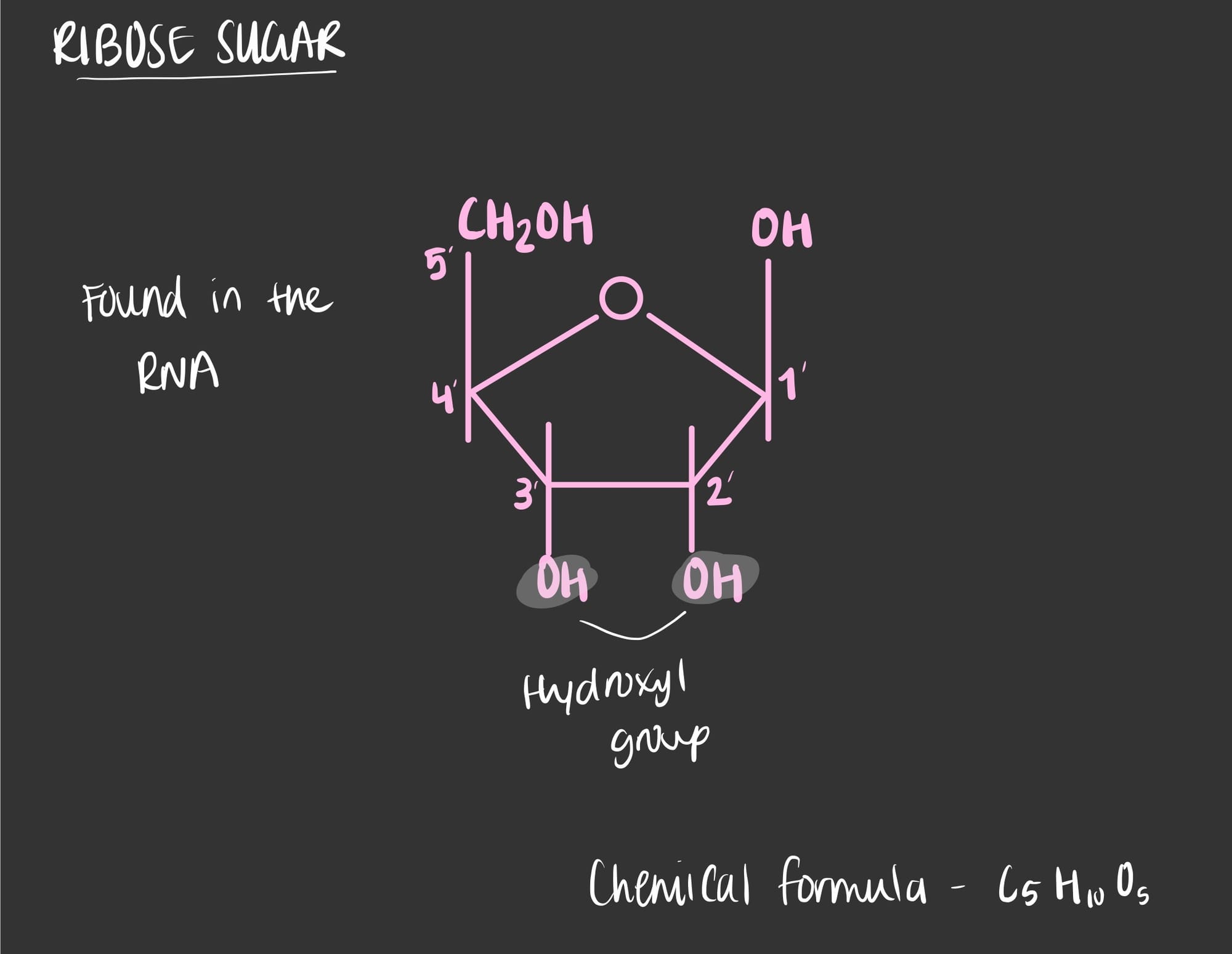
- Phosphate group (PO4-3): This gives RNA a slightly negative charge and contributes to the backbone of the strand.
Unlike the DNA, RNA is single stranded which makes it LESS stable than DNA.
RNA plays several crucial functions for many cellular process such as:
- mRNA (Messenger RNA): Serves as a template, carrying genetic information from DNA to the ribosomes for protein synthesis.
- tRNA (Transfer RNA): Brings amino acids to ribosomes, where they are linked to form proteins according to the mRNA instructions. A crucial component in translation.
- rRNA (Ribosomal RNA): A major component of ribosomes, where it facilitates protein synthesis by helping decode mRNA and form peptide bonds between amino acids.
These are examples of coding RNA while there are examples of non-coding RNA such as:
- miRNA (MicroRNA) & siRNA (Small Interfering RNA): regulate gene expression by influencing the stability and translation of mRNA.
- snRNA (Small Nuclear RNA): plays a role in RNA splicing, a process that modifies RNA transcripts before they are translated into proteins.
Check out the tables below for a summarized comparison between DNA & RNA:
Differences Between DNA and RNA
| Feature | DNA | RNA |
|---|---|---|
| Structure | Double-stranded helix | Single-stranded |
| Sugar | Deoxyribose | Ribose |
| Nitrogenous Bases | Adenine (A), Thymine (T), Guanine (G), Cytosine (C) | Adenine (A), Uracil (U), Guanine (G), Cytosine (C) |
| Stability | Stable under alkaline conditions | Less stable under alkaline conditions |
| Function | Stores genetic information | Involved in protein synthesis and regulation |
| Location | Mostly in the nucleus | Found in the nucleus and cytoplasm |
Base Pairing in DNA and RNA
| Pair | Bases |
|---|---|
| Adenine (A) & Thymine (T) | DNA Specific Pairing |
| Guanine (G) & Cytosine (C) | DNA Specific Pairing |
| Adenine (A) & Uracil (U) | RNA Specific Pairing |
| Guanine (G) & Cytosine (C) | RNA Specific Pairing |
Now that you have a solid foundation in nucleic acids, it's time to explore how genetic information flows within a cell—the Central Dogma of Molecular Biology.
